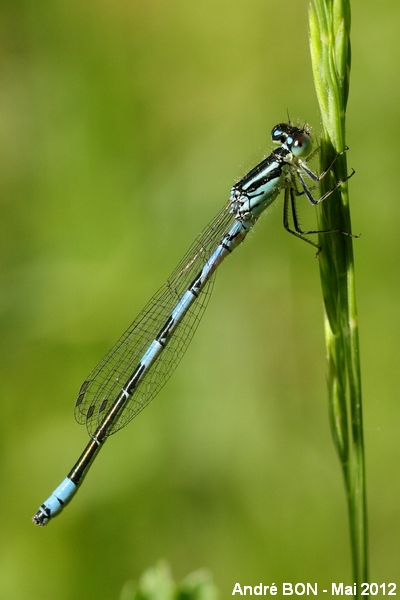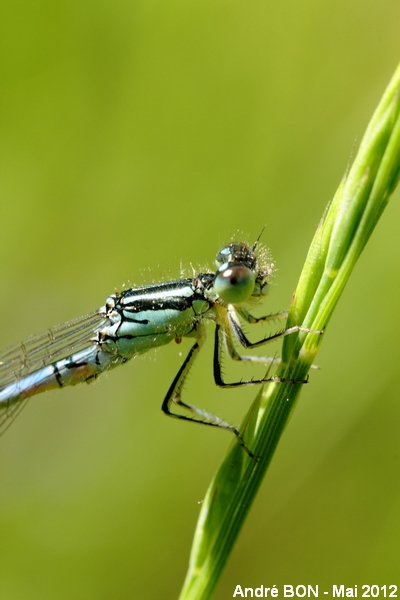

| Dainty Damselfly (Coenagrion scitulum (Rambur, 1842)) |


|
|
Scientific name: Coenagrion scitulum (Rambur, 1842) Common name: Dainty Damselfly French name: Agrion mignon Order: Odonata Suborder: Zygoptera Family: Coenagrionidae Wingspan: 30 to 35 mm. Biotope: Sunny stagnant water with a lot of aquatic vegetation, slow running rivers in the southern part of the range. Geographic area: Southern Europe and Maghreb, Western Europe in expansion to the north (Belgium, the Netherlands, recently observed in Great Britain -2010- after extinction in 1953), east to the regions west of the Caspian sea and to Transcaucasia. Flight time: Late May to early September. |
The Dainty Damselfly is a small blue and black damselfly whose males bear a marking resembling the head of a cat (or a wine glass) on the upper side of the second abdominal segment. The eighth abdominal segment is blue, like on all the members of the same genus. The sixth and seventh segments are completely black. The pterostigmas are long and light-coloured, the fore edge is longer than the hind edge. This is a good criterion to tell this species apart. Females are blue to greenish with generally pale zones at the base of the segments and black rocket-shaped markings. Male Azure Damselfly (Coenagrion puella), Southern Damselfly (Coenagrion mercuriale), Variable damselfly (Coenagrion pulchellum) and Ornet Bluet (Coenagrion ornatum) are not entirely black on segments six and seven. The main risk of confusion is with the Mediterranean Bluet (Coenagrion caerulescens), in southern Europe and in North Africa. This last one shows an almost triangular pterostigma. Males' cercus are longer and straighter than on the Dainty Damselfly. |
| [To know more about the Dainty Damselfly] [Next picture] [Top] |

|
Thanks to Alain Ramel who helped me to tell this damselfly species apart. I was not looking at the right part of the key because of the few we can see of the marking on S2 and because of the colour of the pterostigma which appears darker than the one drawn in my guide book. |
| [To know more about the Dainty Damselfly] [Previous picture] [Top] |

|
The photographer I am trying to be has shot a picture of the eye. The naturalist would have preferred a picture of the marking on the second segment and a picture of the pronotum. |